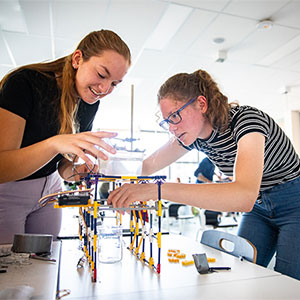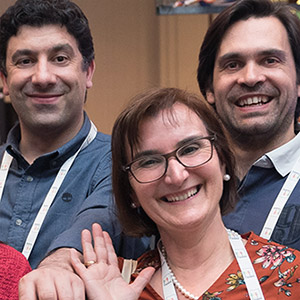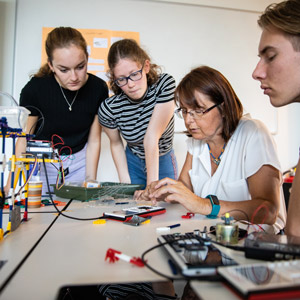-

Flying Like Leonardo Envisioned … In the Classroom!
Posted 14/04/2023 by Ian GallowayDid you know you can fly a Tello drone using Texas Instruments graphing calculators? This new feature allows you to bring flying to the classroom. Using flight and drone technology offer many opportunities for delivering the curriculum. In addition to building math skills, teachers could work on centre of gravity, Newton’s Second Law, air resistance, Bernoulli’s Principle, or ethical issues around drone use. And how about the fact that da Vinci invented three flying machines like the drone 500 years ago?
Read more... -

March 14: let’s celebrate Einstein’s birthday
Posted 10/03/2023 by Ian GallowayIf there is one equation known by the public, it is E=mc2. Created in 1905, the theory of Special Relativity has transformed our understanding of the Universe and the way it works. In that same year, 1905, Einstein explained the photoelectric effect by declaring that energy was quantized, for which he was awarded a Nobel Prize.
Read more... -

Exchange and Cooperation: Value of the T³ Teacher Network
Posted 30/10/2021 by Stephan GriebelThe history of the T³ teacher network is a history of cooperation on many different levels. It is about cooperation between individuals as well as between institutions across national and ‘content’ boundaries.
Read more... -

Computational Thinking and Coding in the Classroom – Sharing Inspiration 2021
Posted 30/09/2021 by Ian GallowayOn Sept. 16, close to 150 people logged in for the third quarterly Sharing Inspiration conference 2021, Computational Thinking and Coding in the Classroom. Four teachers gave presentations of the coding they were carrying out in the classroom and the way in which it impacted student thinking.
Read more... -

You go girl! The experiences of women in STEM
Posted 12/04/2021 by Sónia ReisWhat can we do to empower girls in secondary school to opt for a STEM focus in their education and career? In a world where scientific and technological solutions are desperately needed, we cannot exclude half the world’s talents. We need girls and women! Our T3 teacher network understands the importance of motivating girls to pursue STEM. Four T3 instructors and two students from Europe share their experiences with gender issues, classroom methods and STEM education.
Read more... -

How I performed lab experiments during lockdown
Posted 18/03/2021 by Fernanda Neri, physics and chemistry teacher, Escola Secundária de Amares, PortugalHow can my students work on the lab experiments that are mandatory in the Portuguese curriculum during lockdown? As a physics and chemistry teacher I would like to share my experiences of switching to virtual lessons because of the global pandemic. Learning by doing is important to me; this is how students get a true understanding of physics and chemistry. When I get the chance, I sneak into a lab to use practical examples to explain scientific concepts, even during my regular classes. When I didn’t have these options during lockdown, I worked on solutions with the help of TI-Nspire CX technology.
Read more... -

Happy birthday to us! T³ Europe - 25 years old and still young
Posted 18/03/2021 by Stephan GriebelIn 2021 we are celebrating the 25th birthday of the teachers' network T³ - Teachers Teaching with Technology. At the end of the 1980s, the first graphing calculators appeared on the market. Two professors for math education, Bert Waits and Frank Demana, realized that the real potential of graphing calculators lay in the educational opportunities. Within a decade the developing new didactic possibilities excited many teachers and the T³ network was founded.
Read more... -

Physics project: students sprint towards sustainable waste solutions
Posted 23/10/2020 by Sónia Reis
Read more...
Separating out metal, developing greener ways to collect waste, fishing plastic out of water, washing glass and compressing domestic rubbish — these are the sustainable waste solutions which the students worked on. Using scrum, they were able to work independently, and this gave them the freedom to solve problems. “It’s challenging for both teachers and students,” said physics teacher Cathy Baars, who devised the project, “because the resulting product is not fixed.”







